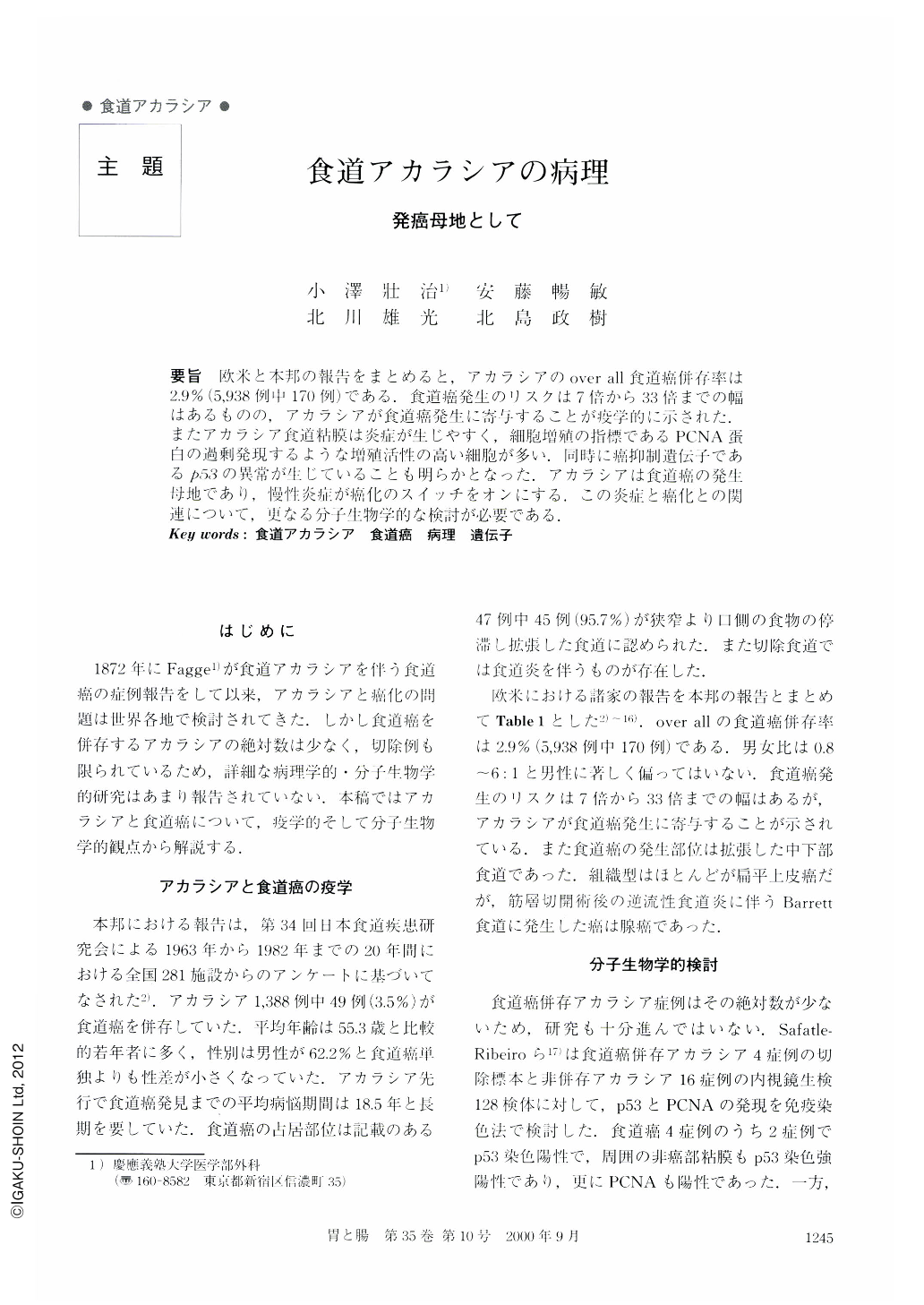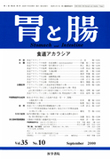Japanese
English
- 有料閲覧
- Abstract 文献概要
- 1ページ目 Look Inside
- サイト内被引用 Cited by
要旨 欧米と本邦の報告をまとめると,アカラシアのOver all食道癌併存率は2.9%(5,938例中170例)である.食道癌発生のリスクは7倍から33倍までの幅はあるものの,アカラシアが食道癌発生に寄与することが疫学的に示された.またアカラシア食道粘膜は炎症が生じやすく,細胞増殖の指標であるPCNA蛋白の過剰発現するような増殖活性の高い細胞が多い.同時に癌抑制遺伝子であるp53の異常が生じていることも明らかとなった.アカラシアは食道癌の発生母地であり,慢性炎症が癌化のスイッチをオンにする,この炎症と癌化との関連について,更なる分子生物学的な検討が必要である.
According to 15 reports, overall prevalence rate of esophageal cancer and achalasia was 2.9% (170 patients with achalasia and esophageal cancer out of 5,938 patients with achalasia) . The risk of malignant degeneration varies from 7-fold to 33-fold. It was epidemiologically demonstrated that achalasia predisposes to esophageal cancer. Although the mechanism responsible for the increased risk of squamous cell carcinoma in patients with achalasia is unclear, it is most likely related to stasis. Carcinogenesis is related to prolonged contact of certain elements of often partially degraded ingested food with the esophageal mucosa. These result in chronic esophagitis. In the inflammatory mucosa of the achalasia esophagus, many cells would overexpress both PCNA protein and mutant p53 protein. Because p53 mutation is an early event in carcinogenesis, it is genetically concluded that the mucosa in achalasia esophagus may become a premalignant lesion. The relation between chronic esophagitis and carcinogenesis should be studied more fully.

Copyright © 2000, Igaku-Shoin Ltd. All rights reserved.


